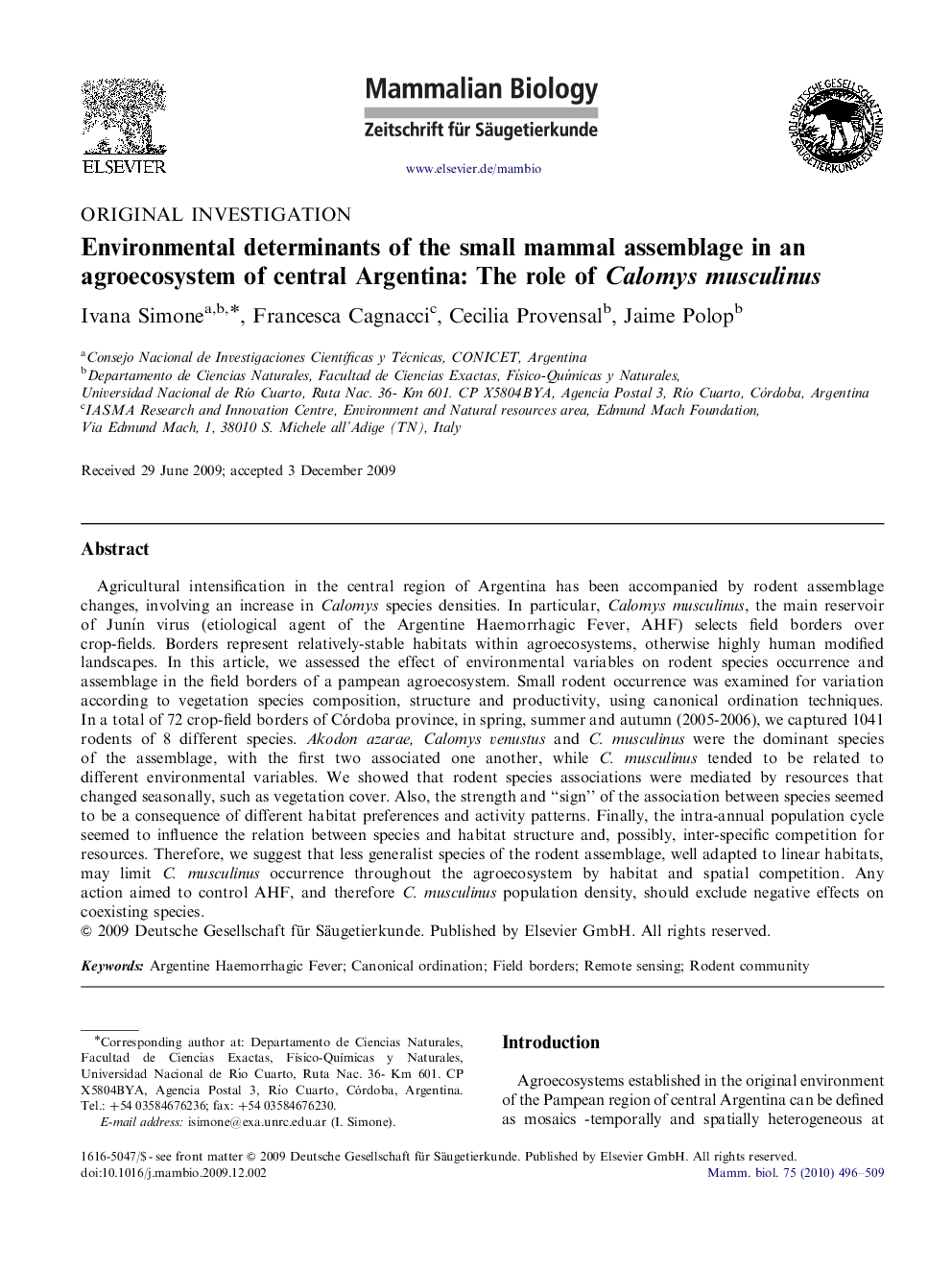| Article ID | Journal | Published Year | Pages | File Type |
|---|---|---|---|---|
| 2193823 | Mammalian Biology - Zeitschrift für Säugetierkunde | 2010 | 14 Pages |
Agricultural intensification in the central region of Argentina has been accompanied by rodent assemblage changes, involving an increase in Calomys species densities. In particular, Calomys musculinus, the main reservoir of Junín virus (etiological agent of the Argentine Haemorrhagic Fever, AHF) selects field borders over crop-fields. Borders represent relatively-stable habitats within agroecosystems, otherwise highly human modified landscapes. In this article, we assessed the effect of environmental variables on rodent species occurrence and assemblage in the field borders of a pampean agroecosystem. Small rodent occurrence was examined for variation according to vegetation species composition, structure and productivity, using canonical ordination techniques. In a total of 72 crop-field borders of Córdoba province, in spring, summer and autumn (2005-2006), we captured 1041 rodents of 8 different species. Akodon azarae, Calomys venustus and C. musculinus were the dominant species of the assemblage, with the first two associated one another, while C. musculinus tended to be related to different environmental variables. We showed that rodent species associations were mediated by resources that changed seasonally, such as vegetation cover. Also, the strength and “sign” of the association between species seemed to be a consequence of different habitat preferences and activity patterns. Finally, the intra-annual population cycle seemed to influence the relation between species and habitat structure and, possibly, inter-specific competition for resources. Therefore, we suggest that less generalist species of the rodent assemblage, well adapted to linear habitats, may limit C. musculinus occurrence throughout the agroecosystem by habitat and spatial competition. Any action aimed to control AHF, and therefore C. musculinus population density, should exclude negative effects on coexisting species.
